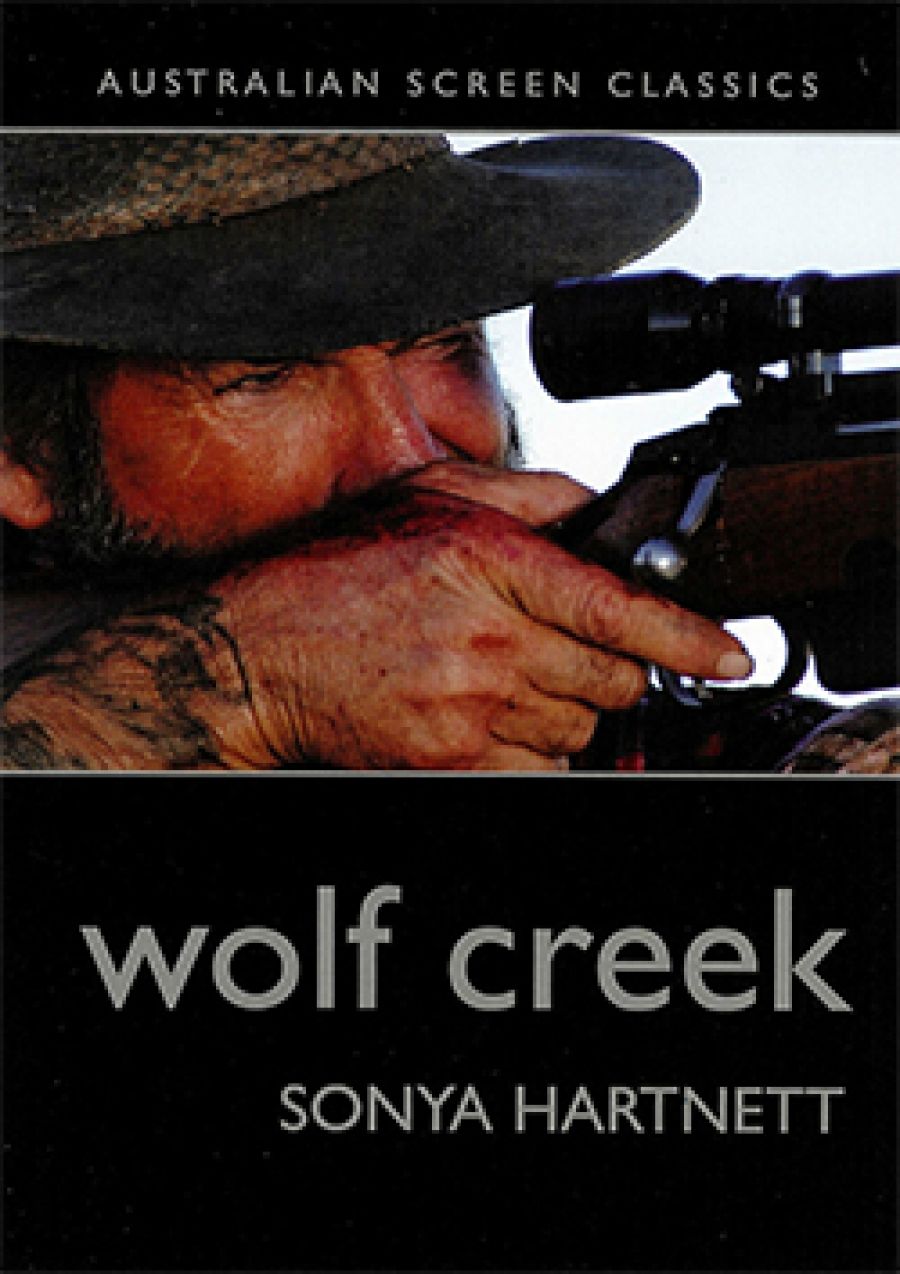
- Free Article: No
- Contents Category: Film
- Review Article: Yes
- Online Only: No
- Custom Highlight Text:
Wolf Creek, released in 2005, was always smarter than your average slasher. Anchored by a brilliant performance by John Jarratt, the film was harrowing enough to strike the unobservant as another Saw or Hostel, but far more lurked there for those who bothered to look. In acclaimed novelist Sonya Hartnett’s brief but vivid critical study, the film has found the analysis it deserves. In the book’s arresting autobiographical opening, Hartnett, describing the fear and deprivation of childhood, coins the term ‘two-bit antipodean horror’, which she claims to prefer to the more familiar ‘Australian Gothic’. It evokes a ‘sullen blandness’ at the heart of the country, and it’s this pinched meanness, this horror, that she describes so well in her study.
- Book 1 Title: Wolf Creek (Australian Screen Classics)
- Book 1 Biblio: Currency Press, $16.95 pb, 64 pp, 9780868199122
As a film that is both deeply grounded in genre trappings and a riff on the ‘true crime’ stories of Ivan Milat and Bradley John Murdoch, Wolf Creek requires a deft touch. Hartnett honours the film’s careful balance with writing that flits between analysis and synopsis. She tempers her critical prose with the occasional italicised journalistic insert, reminding us of the very real story behind this convincing illusion; and skilfully maintains the right mixture of synopsis and analysis throughout.
Another of the book’s virtues is its perceptive analysis of gender and male aggressiveness, with none of the usual film theory or jargon. Hartnett’s long background in fiction pays off here. The reading of the film always stays close to the characters and their plight, never wandering off into academic abstraction or needless digression. There is an empathy and understanding in the approach, to balance against the film’s furies.
Sonya Hartnett, in this intelligent, non-specialist essay, has done what any film critic should do: send the reader back to the film itself.


Comments powered by CComment